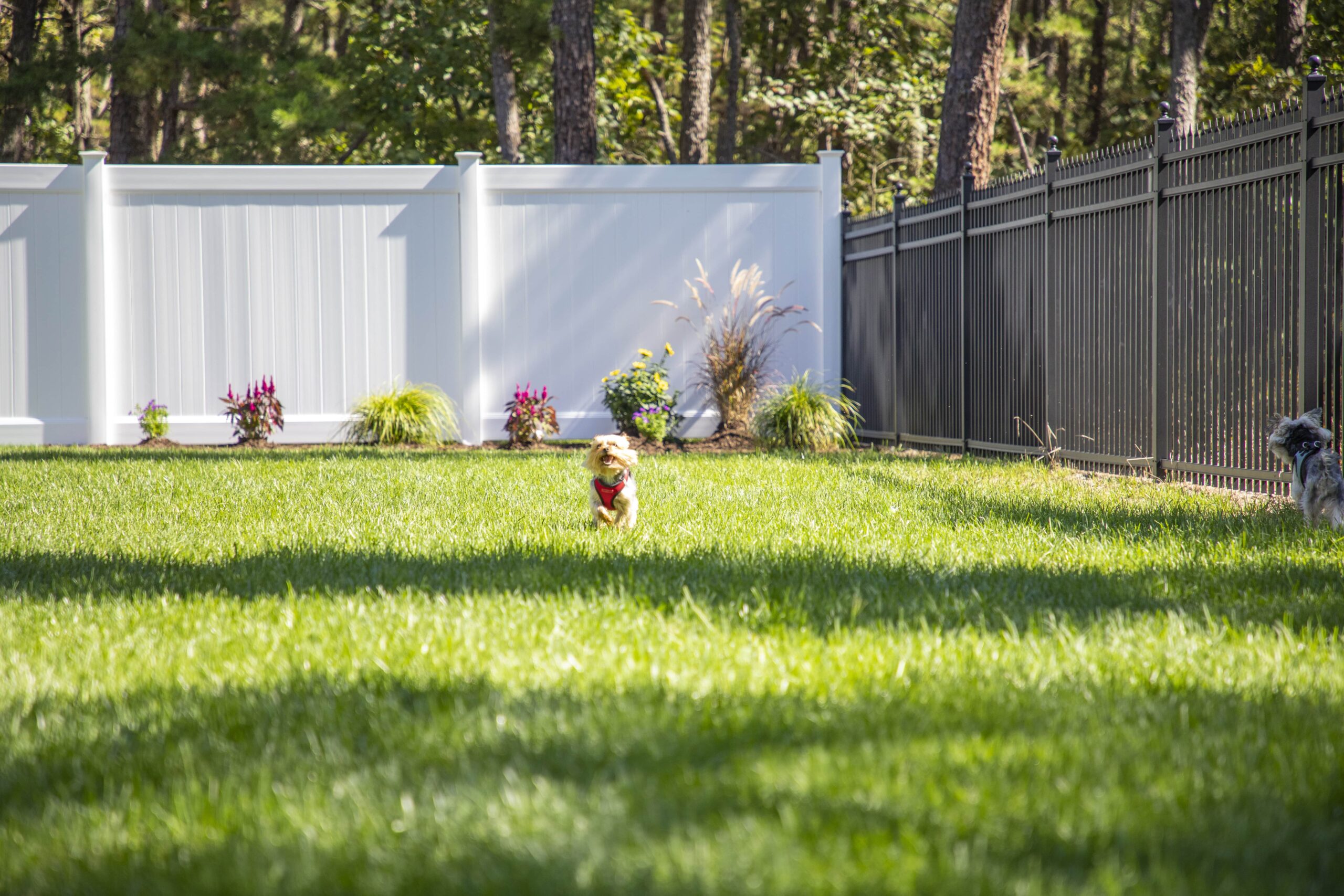All Categories
Featured
Setting up a fence on your residential property can include privacy, security, and visual allure, however before you start excavating holes and establishing messages, it's important to understand whether you require a permit. The kind of fence you prepare to install, where it will certainly be placed, and local zoning laws can all affect the allowing process. Not acquiring the required permits might result in penalties or the need to eliminate the fence. Below's what you require to understand to ensure a smooth installment process.
Why Are Permits Essential for Fence Setup? Licenses are necessary for making certain that your fence complies with regional zoning legislations and building regulations. These policies aid ensure the safety and security of your building and the bordering area. Additionally, permits stop conflicts with next-door neighbors or neighborhood authorities, especially when it concerns home lines, height restrictions, and general layout.
In most cases, regional authorities need licenses to control things like presence at junctions or the proximity of a fencing to public spaces like sidewalks or roads. Authorizations additionally aid make sure that fences are installed properly and safely, especially when it pertains to high fences or unique products.
Typical Kinds Of Permits for Fence Installment. The kind of fencing you desire to install and your place will certainly identify which licenses are needed. Below are the most usual types:
Structure Authorization. A structure permit is normally needed for fences that exceed certain elevation limitations (frequently over 6 feet), lie near a public road or pathway, or are made from specific products. Building allows ensure that the structure meets local building codes, including security standards.
Zoning Permit. Zoning licenses are usually required to guarantee that your fencing follows regional zoning regulations. Zoning regulations can define where a fencing can be put on your building (e.g., along property lines or in front yards), as well as set restrictions on fence elevation. These legislations are developed to stop blockages that might impact website traffic security or area looks.
![]()
Obstacle License. In some areas, you might need a setback authorization to position your fencing a particular distance from property roadways, lines, or utilities. Problems are intended to preserve proper space between structures and property limits, lowering prospective disputes with next-door neighbors or public infrastructure.
Homeowners Association (HOA) Authorization. If your residential or commercial property becomes part of an area governed by a Homeowners Association (HOA), you will likely need approval from the HOA before setting up a fencing. HOA guidelines frequently regulate the style, elevation, materials, and even color of fences, ensuring that they match the general aesthetic of the area.
The Refine for Getting a Fencing Authorization. To obtain a fencing authorization, you commonly need to contact your local city or area workplace. Most locations have a structure department or preparation office where you can apply for licenses. The procedure involves finishing an application and providing in-depth info regarding your recommended fencing, consisting of:
Fencing design (products, height, design) Place on the property. Building line information (for exact positioning) Oftentimes, a website strategy showing the suggested fence's placement will be required. You might likewise need to pay a license fee, which can vary based on area and the intricacy of the project.
As soon as you submit your application, the neighborhood authorities will certainly review it to make sure the fence abides by neighborhood laws. Depending upon your area, you may also require to arrange an evaluation or enable for a residential or commercial property survey.
When Do You Not Need a License? In many cases, an authorization may not be required. Typically, you may not require a permit if:
![]()
The fence is under a specific elevation (commonly 3-4 feet for front lawns) You're replacing an existing fence with the same kind and height. The fence is temporary (such as a garden fence) Nevertheless, it's always an excellent idea to contact your local building or zoning division to confirm the needs, as policies can vary.
Repercussions of Not Getting a Permit. In some instances, you may need to re-install the fencing according to code, which could be pricey and taxing. Additionally, not following the correct permitting process can create issues with neighbors, especially if your fencing prolongs past your property line or does not fulfill elevation or design needs.
Verdict. Prior to setting up a fence, make certain you understand the regional regulations and whether you need a permit. It is necessary to talk to your local building or zoning workplace, in addition to your HOA if appropriate, to recognize what's needed. By obtaining the right permits, you'll ensure that your fencing is legally compliant, safe, and devoid of future problems. Taking this added action will save you money and time over time while providing satisfaction that your project gets on the best track.
Why Are Permits Essential for Fence Setup? Licenses are necessary for making certain that your fence complies with regional zoning legislations and building regulations. These policies aid ensure the safety and security of your building and the bordering area. Additionally, permits stop conflicts with next-door neighbors or neighborhood authorities, especially when it concerns home lines, height restrictions, and general layout.
In most cases, regional authorities need licenses to control things like presence at junctions or the proximity of a fencing to public spaces like sidewalks or roads. Authorizations additionally aid make sure that fences are installed properly and safely, especially when it pertains to high fences or unique products.
Typical Kinds Of Permits for Fence Installment. The kind of fencing you desire to install and your place will certainly identify which licenses are needed. Below are the most usual types:
Structure Authorization. A structure permit is normally needed for fences that exceed certain elevation limitations (frequently over 6 feet), lie near a public road or pathway, or are made from specific products. Building allows ensure that the structure meets local building codes, including security standards.
Zoning Permit. Zoning licenses are usually required to guarantee that your fencing follows regional zoning regulations. Zoning regulations can define where a fencing can be put on your building (e.g., along property lines or in front yards), as well as set restrictions on fence elevation. These legislations are developed to stop blockages that might impact website traffic security or area looks.

Obstacle License. In some areas, you might need a setback authorization to position your fencing a particular distance from property roadways, lines, or utilities. Problems are intended to preserve proper space between structures and property limits, lowering prospective disputes with next-door neighbors or public infrastructure.
Homeowners Association (HOA) Authorization. If your residential or commercial property becomes part of an area governed by a Homeowners Association (HOA), you will likely need approval from the HOA before setting up a fencing. HOA guidelines frequently regulate the style, elevation, materials, and even color of fences, ensuring that they match the general aesthetic of the area.
The Refine for Getting a Fencing Authorization. To obtain a fencing authorization, you commonly need to contact your local city or area workplace. Most locations have a structure department or preparation office where you can apply for licenses. The procedure involves finishing an application and providing in-depth info regarding your recommended fencing, consisting of:
Fencing design (products, height, design) Place on the property. Building line information (for exact positioning) Oftentimes, a website strategy showing the suggested fence's placement will be required. You might likewise need to pay a license fee, which can vary based on area and the intricacy of the project.
As soon as you submit your application, the neighborhood authorities will certainly review it to make sure the fence abides by neighborhood laws. Depending upon your area, you may also require to arrange an evaluation or enable for a residential or commercial property survey.
When Do You Not Need a License? In many cases, an authorization may not be required. Typically, you may not require a permit if:

The fence is under a specific elevation (commonly 3-4 feet for front lawns) You're replacing an existing fence with the same kind and height. The fence is temporary (such as a garden fence) Nevertheless, it's always an excellent idea to contact your local building or zoning division to confirm the needs, as policies can vary.
Repercussions of Not Getting a Permit. In some instances, you may need to re-install the fencing according to code, which could be pricey and taxing. Additionally, not following the correct permitting process can create issues with neighbors, especially if your fencing prolongs past your property line or does not fulfill elevation or design needs.
Verdict. Prior to setting up a fence, make certain you understand the regional regulations and whether you need a permit. It is necessary to talk to your local building or zoning workplace, in addition to your HOA if appropriate, to recognize what's needed. By obtaining the right permits, you'll ensure that your fencing is legally compliant, safe, and devoid of future problems. Taking this added action will save you money and time over time while providing satisfaction that your project gets on the best track.
Latest Posts
Reliable Industrial Roofing Solutions by Weathercraft
Published May 27, 25
1 min read
How Regular Auto Maintenance at Montclare Auto Repair Keeps Your Wallet Happy
Published May 26, 25
1 min read
Find Premier Car Repair Solutions in Chicago – Expert Care for Your Vehicle
Published May 25, 25
1 min read
More
Latest Posts
Reliable Industrial Roofing Solutions by Weathercraft
Published May 27, 25
1 min read
How Regular Auto Maintenance at Montclare Auto Repair Keeps Your Wallet Happy
Published May 26, 25
1 min read
Find Premier Car Repair Solutions in Chicago – Expert Care for Your Vehicle
Published May 25, 25
1 min read